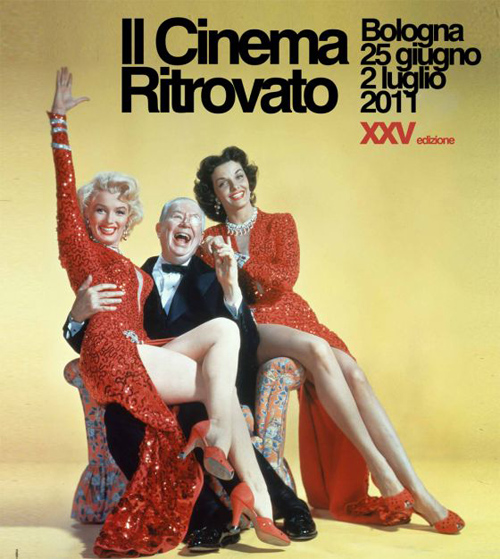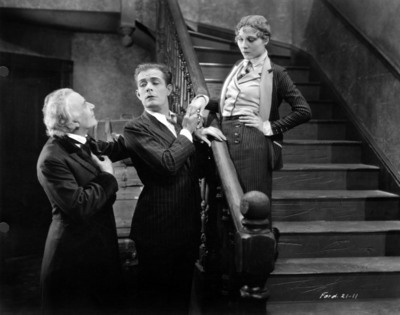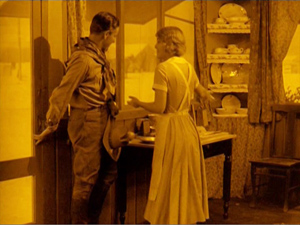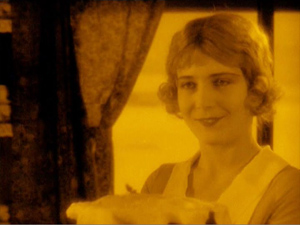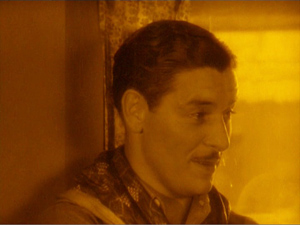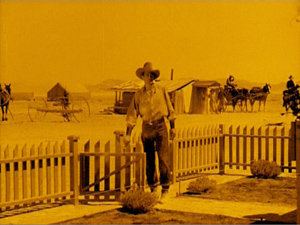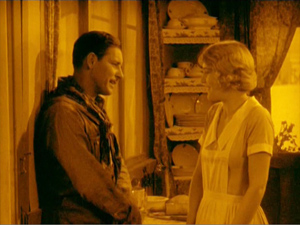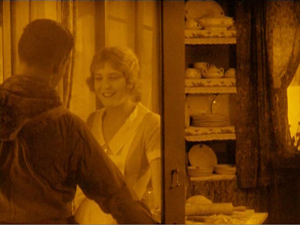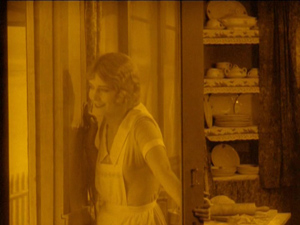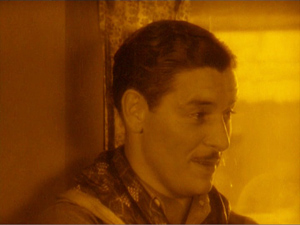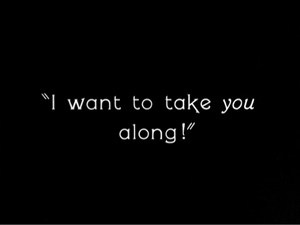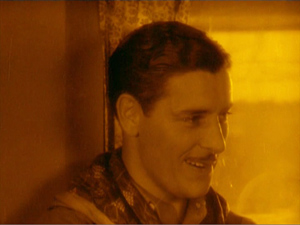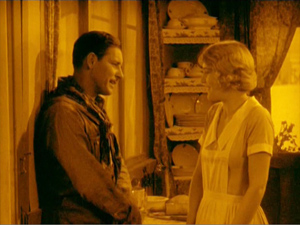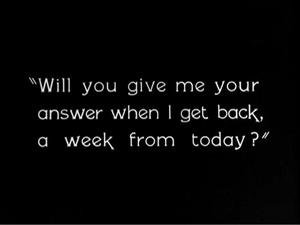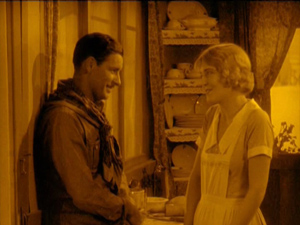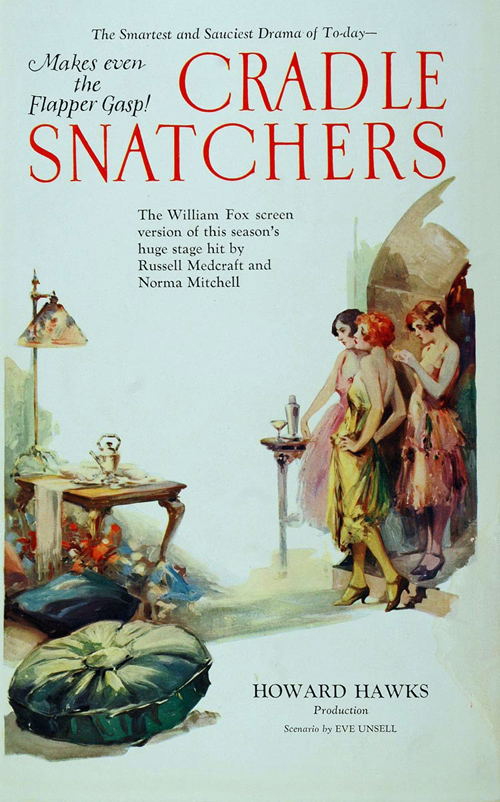Unquiet silents
Wednesday | June 29, 2011 open printable version
open printable version
DB here:
It happens every year: the Cinema Ritrovato festival in Bologna is offering something for everyone. It’s officially dedicated to film history, but its organizers understand that history includes today. This year you can watch films from 1898 (Gaumont shorts) to 2011 (The Actor, hot from Cannes). Silent cinema is given its due, but so are films from the 1930s-1950s, with glimpses of the 1960s (Petri’s The Assassin, the new La Dolce Vita) and 1970s (Kevin Brownlow’s little-seen Winstanley).
The director retrospectives alone are overwhelming. We have a chance to watch great swatches of films by the celebrated Alice Guy, the underappreciated Luigi Zampa, the effortlessly lyrical Boris Barnet, and the still-being-discovered master of the 1910s, Albert Capellani. Oh yeah, then there’s a guy called Hawks, with a complete set of all his surviving silents filled out with little items like Twentieth Century, Tiger Shark, and thanks to Grover Crisp a lab-fresh restoration of Only Angels Have Wings that had even hard-core Ritrovato veterans gaping.
Not to mention sidebars dedicated to images of socialism and utopia, the development of color cinema, and the annual “100 Years Ago” series curated by Mariann Lewinsky, who brought a stunning array of 1911 films into our ken. With Ayn Rand’s gospel of egoism and selfishness finding ever more adherents these days, a screening of the original Italian version of We the Living (Noi Vivi) reminds us that, contrary to the evidence of this year’s Atlas Shrugged, you can make a pretty good movie from one of her books. (Of course the great Rand adaptation is the out-sized Fountainhead.) In the evenings, on the Piazza Maggiore, items like The Thief of Bagdad and Taxi Driver regale a thousand people or more.
In short, a feeding frenzy for the cinephile. We’ve been here before; you can read reports from the last four years in the category Festivals: Cinema Ritrovato. But this time things are even more intense. A fourth venue has been added, the ample and modern Cinema Jolly, so the decisions about what to see are even more pressing.
Kristin has concentrated her viewing on the 1910s, although so far she’s found time for Wind Across the Everglades and an episode of Barnet’s charming Miss Mend. (She wrote about the Flicker Alley DVD of this here). Her upcoming blog entry will concentrate on Capellani. For now, I find that a mere two films give me something to chew on.
From talky silents to talking movies
Upstream.
Ford and Hawks are very different directors, but two 1927 films, both made at Fox, allow us to see their work blending into a broad trend.
Upstream, recently rediscovered and shown to admiring audiences around the world, takes place largely in a boarding house for struggling vaudevillians. A knife-thrower is in love with his assistant, who is in love with a self-centered ham hired to play Shakespeare. Among the roomers are a declining classical actor and the song-and-dance brothers Callahan and Callahan, one of whom is Jewish. The ham accidentally becomes a star, in the process forgetting the girl he once wooed. But her marriage to the knife-thrower is threatened when the ham returns to the boarding house.
The film has the drawling, anecdotal quality of many Ford comedies. The plot is simple, but it’s decorated with character bits and an overall tone of self-aware corn. The latter was enhanced in the Ritrovato screening by the brash musical accompaniment designed by Donald Sosin, with him on piano and Guenter A. Buchwald on violin. Sosin, like Ford, knows hokum when he sees it, and both know that you must revel in it.
Cradle Snatchers, Hawks’ third film, shows a trio of cheated wives exacting revenge on their philandering husbands. The women arrange for three penniless college boys to pretend to court them so that their husbands can become jealous. Even though some portions are missing, the first reel is intact, and it’s instructive. Instead of opening with the women’s plight, as the source play does, the film starts with the fraternity brothers and mostly anchors our viewpoint to theirs. Variety noticed.
Probably the most remarkable angle of transplanting this “smash” comedy to celluloid lies in the manner in which the three college youths have been duplicated. As a screen threesome they overshadow the women who play the neglected wives. . . Each of the male youngsters does exceptionally well and Hawks has directed them splendidly.
Once Hawks turned it into a male-centered plot, he could indulge in the gay-play that would crop up in his later work. A title points out that “When a roommate takes a girlfriend, he becomes only half a roommate.” One of the boys hangs up on his girlfriend in order to chat up a sexy dame strolling by, but she turns out to be a frat brother in drag (the same Sammy Cohen playing Callahan frère in Upstream). Still, the gags provide equal-opportunity innuendo, as when Louise Fazenda flounces in from a massage and is asked “What have you been doing?” She replies: “I’m not doing, I’ve been done.”
Visually the films are remarkably similar. Removed from Monument Valley, Ford doesn’t give us vistas, deep focus, or even scenes organized around doorways. At home in sparky comedy, Hawks doesn’t provide the graceful, pell-mell staging we get in Twentieth Century and His Girl Friday. Instead, we have classical American silent technique, already by the early 1920s quite polished (as can be seen in the 1922 Ritrovato entry from another master, The Real Adventure by King Vidor).
This silent technique turns out rather talky. Dialogue titles constitute seventeen percent of the shots in Upstream and sixteen percent of the shots in Cradle Snatchers. This isn’t a late 1920s development, since The Real Adventure contains nearly twenty percent dialogue titles. Why are these figures interesting?
The 1920s, the era of the “mature silent cinema,” led many filmmakers and critics to expect that filmmakers would shift toward purely visual methods of storytelling. Keaton’s Our Hospitality (1923), Lloyd’s Girl Shy (1924), and Lubitsch’s Lady Windermere’s Fan (1925) remain dazzling exercises in getting maximum impact from the flow of images, with dialogue titles adding another layer of dramatic interest.
Ideally, the aesthetes thought, one could make a film entirely without titles. German films like Der letzte Mann (1924) are the most famous examples, but there were American experiments along these lines too, such as The Old Swimmin’ Hole (1921). The arrival of sound threatened this trend toward “purely cinematic” narration. Now, critics fretted, filmmakers would be forced to rely on language to make dramatic points. The visual side of cinema would be secondary to “theatrical” methods.
Actually, however, alongside the consummate pictorial storytelling of Keaton, Lloyd, Lubitsch, and others, something else was happening. During the 1920s, quite a lot of American cinema became dependent on language. This happened, paradoxically, because of what critics then and since called the increasingly “cinematic” qualities of movie storytelling.
Not having either Cradle Snatchers or Upstream available for illustration, here’s an example from a film not playing here. In Henry King’s Winning of Barbara Worth (1926), Holmes the engineer is calling on Barbara before he sets out on a mission. He tells her that he plans to go back east, and he’d like her to join him. He’ll be back in a week for her decision.
At the purely imagistic level, the scene is presented in standard continuity, with a long shot establishing the kitchen, then a series of reverse-angle medium-close shots of Holmes and Barbara as they talk flirtatiously.
The conversation is interrupted by a cutaway to Abe outside, coming in the gate, which serves as a transition to a two-shot of Holmes and Barbara.
It’s from that framing that Holmes leaves, and she lingers at the doorway.
But the scene is even more broken down than this. Of its twenty-eight shots only eighteen are images; the other ten are dialogue titles. They are sandwiched in between the tight singles of Holmes and Barbara, as here:
In effect, breaking the scene down “cinematically” into close views of each character may seem to pull cinema away from theatre. Yet it works to frame and underscore each line of dialogue. The pattern is speaker/ title/ speaker. Even the more distant shots, like the opening establishing shot and the final two-shot framing, are broken up by inserted titles.
Across the 116 seconds of the passage, nearly 36% of the shots consist of dialogue. Of course this proportion wouldn’t be sustained across the whole film, since many sequences are filled with physical action and have no conversation. But in this and many other films American directors were creating a silent-film dramaturgy that incorporated dialogue into the texture of the cutting. Dialogue titles became editing units that could maintain a rapid pace and, combined with legible singles and two-shots, made for cogent storytelling.
This is what happens in Upstream and Cradle Snatchers. They are dialogue-driven vehicles (one a short-story adaptation, the other taken from a play), and both Ford and Hawks, idiosyncratic stylists in other genres and at other times, accept the dominant norms of their moment for these projects. These films employ speaker/ title/ speaker cutting, the singles and firm two-shots, and the careful eyeline matching. In fact, Ford uses a clever “impossible” eyeline match when the ham star looks up from the dinner table and the answering shot shows the distraught Gertie in her room upstairs, looking down, as if at him.
So were films like Upstream, Cradle Snatchers, The Real Adventure, and The Winning of Barbara Worth “preparing” for sound? In the sense of underscoring dialogue, yes. But the detailed breakdown into singles was not the most common option in most talkie scenes, at least in US cinema. (Japan is another story; cf. Ozu’s 1930s films.) The default for most scenes was the two-shot framing, with characters conversing within a sustained shot. This strategy is present at the end of our Barbara Worth scene, and it can be found throughout 1920s cinema. In other words, given the choices already established during the 1920s, sound-era filmmakers usually preferred the two-shot over singles. Accordingly, the cutting rate slowed down in most sound cinema. (The over-the-shoulder shot, a sort of single-plus, was another fairly rare option in the 1920s, but that too came into its own in the talking film.)
As often happens, Hollywood style offers a menu, with some options becoming more common at different periods. For sound filming, directors relied upon what had been an alternative option in the silent era, the two-shot. They saved singles for key moments. Today, with the dominance of what I’ve called intensified continuity, we seem to be back in the late 1920s. Filmmakers are inclined to present a line of dialogue with a tight single of the speaker, as happens in the Ford, Hawks, Vidor, and King films–but this time, of course, sync sound does duty for the intertitles.
This is one of the things that Ritrovato does best—provoke you into seeing new connections and trying out fresh ideas. Of course, it shows you a wonderful time in the process.
Kristin’s 2010 blog entry on Capellani is here. She will update it and write a new one after she’s assimilated the Ritrovato experience. The Variety review of Cradle Snatchers is from 1 June 1927, p. 16. We discuss dialogue intertitles in American cinema throughout The Classical Hollywood Cinema (1985), particularly in the chapters written by Kristin.












